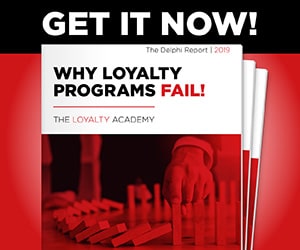Everyone knows that the air travel experience isn’t what is used to be. My recent trip around the world in 5 days served to accentuate the contrast of today’s reality with more elegant days past, while reminding me of solutions that remain untapped by the airlines to improve their standing with frequent flyers.
Some aspects of the air travel experience are so egregious that even the most generous frequent flyer program can’t overcome the problems. My opinion is that the airlines must embrace change, or risk permanently relegating their valued frequent flyer programs (FFP) to a commodity status.
The issue of airline profitability has to be front and center in this discussion. Since the bottom of the most recent airline industry economic cycle, the airlines have continued to homogenize their fleets, moving to more efficient airframes. Schedules have been set to meet demand with a thin margin of error, meaning that nearly every flight one takes these days is fully loaded. Labor agreements have been renegotiated by the majors, and lower cost entrants started out with more advantageous compensation models. Mergers have taken place with collapsing hubs wringing new efficiencies out of the network. Fuel remains a variable expense that is difficult to control, but whose impact on profitability is smartly managed by airline managers with forward purchases and hedged contracts.
The sum impact of the profitability discussion should mean that if the current generation of airline managers are truly competent, then the core issues of profitability should be accounted for and it should not be pilots, flight attendants, customers, and FFP’s themselves that are penalized each time the airline misses its financial projections.
Some ready examples of how the flying experience has degraded include:
- The in-flight experience has been deconstructed in search of “ancillary revenue” at multiple touch points, most of the changes coming at the expense of the customer. Baggage charges, early check-in fees, “extra leg room” seat charges, and the near elimination of free food and beverage are familiar pain points to those who fly often.
- Changes to the management of the “standby list” at airports have resulted in irrational policies that frustrates flyers. During an exhausting trip to Malaysia and back, I was denied boarding on two flights that would have saved me 5-6 hours of travel time, all because my FFP status with the airline didn’t merit this “privilege”. Both flights left with over 30 empty seats.
- The need to implement Enterprise Engagement Strategy across major US airlines is clear. Somehow, the financial struggles of the airlines has trickled down to cabin crews such that these otherwise kind people approach cabin service in a near-adversarial manner. On code-shared flights from Miami – Kuala Lumpur and return, the legs operated by the foreign carrier partners were full of smiles, great service, and helpful attitudes. Sadly, the legs operated on US airlines were characterized by a generally surly atmosphere.
There is a corresponding list of solutions that are easily within grasp of the airlines to execute:
- If the airlines would use their data, as complete a customer data set as any industry outside of banking, to link lifetime value and previous FFP status to customer records, it could support customer service decisioning and create the opportunity for customer delight. Lifetime FFP miles, an indication of past patronage, are known and previous tier achievements can be remembered (Gold, Platinum, etc.). Airlines could use these simple indicators to make occasional exceptions to care for valuable business flyers, regardless of their current status. As we all know, the flow of business drives who and where we fly, and a person can become more valuable upon signing of the next long term client contract.
- Avoid the temptation to monetize every step of the flight experience. Just like financial people who can ruin points-based loyalty programs by falling too much in love with breakage, fees, and by tinkering with redemption levels, airline managers must return to a more bundled experience. Give a little, earn a lot.
- Include cabin and ground crews in the magic of creating a memorable flying experience. Give counter and flight attendants a reason to smile, and help all associates remember that the people in the seats really are paying the bills. This might be the most powerful suggestion in this list, and successful achievement of the objective is more a matter of will than anything else.
I’m not an airline basher by nature. I spent 10 years as a supplier of components to commercial airlines and have family members with entire careers piloting passengers around the world. I am pulling for the airlines to “up their game” by recalibrating their interest in ancillary revenue and cost-cutting with the in-flight experience.
There is a happier balance that can be struck for all parties. If that balance can be achieved, then FFP’s can be better used to truly influence airline choice.




